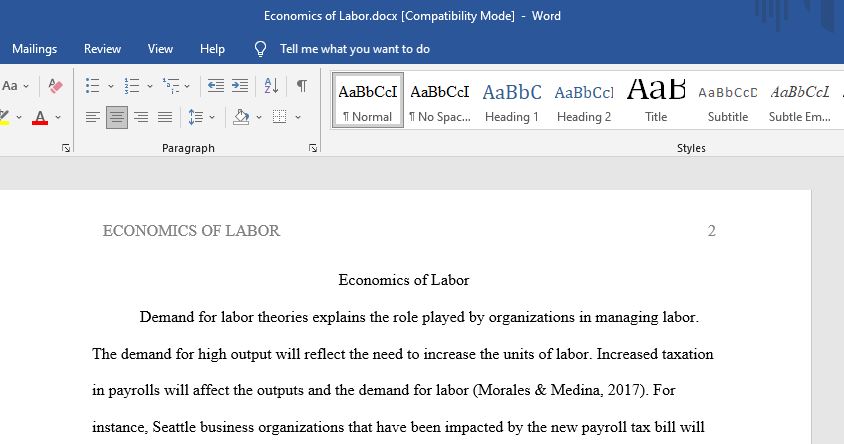Research on Economics of Labor
exam answer in the format described in the last paragraph. Note that you are limited to two pages
of text but you may also create a separate page(s) for your figure(s) if you have any. Submit your
files via Blackboard Assignment by the start of class, Tuesday, March 30.
In July of 2020, partly to fund public programs to fight the COVID crisis, the Seattle city council passed a
new payroll tax aimed at “taxing big business” that took effect at the beginning of 2021. The new tax is
tiered, applying to firms with payrolls of $7 million or more, and levied as follows1
:
• For businesses with Seattle payrolls of $7 million to $99.9 million:
o No tax on salaries under $150,000
o 0.7% tax on salaries of $150,000-$399,999
o 1.7% tax on salaries over $400,000
• For businesses with Seattle payroll between $100 million and $999.9 million:
o No tax on salaries under $150,000
o 0.7% tax on salaries of $150,000-$399,999
o 1.9% tax on salaries over $400,000
• For businesses with Seattle payrolls of $1 billion or more:
o No tax on salaries under $150,000
o 1.4% tax on salaries of $150,000 to $399,999
o 2.4% tax on salaries over $400,000
For more background, read the attached article from The Seattle Times.
Use the theory that you learned to predict the impact of this tax on the equilibrium
1. employment, hours, and salaries of high-skilled and highly educated workers in Seattle (i.e.,
workers who were making more than $150,000 per year before the law took effect);
2. non-salary compensation of high-skilled and highly educated workers;
3. employment and wages/salaries of less-skilled workers in Seattle (workers who make less
than $150,000 per year);
4. number of workers in Seattle making exactly $150,000 and exactly $400,000 in salary in
larger firms;
1 This schedule is from the website of the Washington State Medical Association,
https://wsma.org/Shared_Content/News/Membership_Memo/20200709/seattle_city_council_approves_new_payroll
_tax, accessed March 22, 2021.
5. number of employers in Seattle with payrolls of exactly $7 million, $100 million, and $1
billion; and
6. number of employers in Seattle.
Finally, how do you think the Seattle city council predicted that this new tax would generate
$200 million in additional revenue for the city of Seattle? Do you think their prediction will
prove accurate? Why or why not?
Answer preview:

word limit:692
